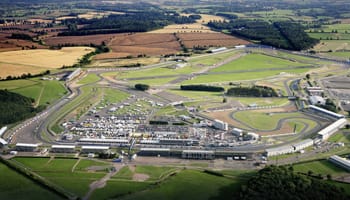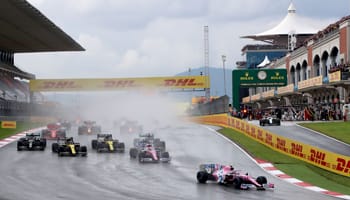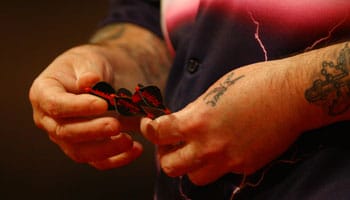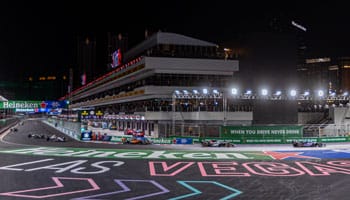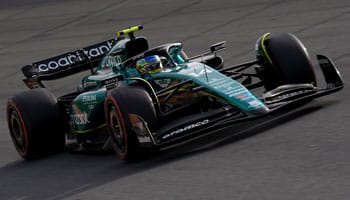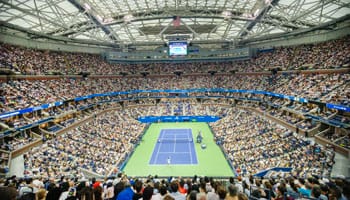bwin makes betting on every single MotoGP race as exciting as the racing itself, and your betting options are as varied as the circuits on the MotoGP calendar 2022. Get the most excitement out of MotoGP: bet today with bwin!
Moto GP circuits
The first MotoGP race (then known as the 500cc class) was staged on the Mountain circuit at the Isle of Man TT in 1949. While open-road circuits such as the TT have since dropped off the GP calendar, one venue remains and that is the Assen circuit in the Netherlands, home of the Dutch TT race.
For 2022 one new circuit makes its first appearance on the calendar with the Mandalika venue in Indonesia scheduled to stage the second of 21 races.
This continues the move towards the Middle East and Asia, with recent additions to the calendar including Losail in Qatar, Sepang in Malaysia and the Chang circuit in Thailand. This was balanced by the 2020 arrival of Finland’s KymiRing and Portugal’s Algarve International Circuit in Portimao on the GP roster.
Rights holders Dorna stay true to their roots with four races in Spain and traditionalists will be happy to see the likes of Mugello (Italy), Jerez (Spain) and Misano (San Marino) all retained.
One thing missing from the race calendar is nine-time world champion Valentino Rossi, who has retired after 21 seasons in racing.
MotoGP season
The 2022 MotoGP season opens with the night race in Qatar in March and finishes with its traditional trip to Spain in November. The calendar features 21 races, including an early maiden stop at the Mandalika circuit. Here you’ll find the MotoGP timetable and some interesting facts and figures about each GP circuit.
MotoGP race calendar 2022
Grand Prix dates and circuits
March 6: Qatar (Losail)
March 20: Indonesia (Mandalika)
April 3: Argentina (Rio Hondo)
April 10: United States (Americas)
April 24: Portugal (Algarve)
May 1: Spain (Jerez)
May 15: France (Le Mans)
May 29: Italy (Mugello)
June 5: Spain (Barcelona-Catalunya)
June 19: Germany (Sachsenring)
June 26: Netherlands (Assen)
July 10: Finland (KymiRing)
August 7: Great Britain (Silverstone)
August 21: Austria (Red Bull Ring)
September 4: San Marino (Misano)
September 18: Spain (Aragon)
September 25: Japan (Motegi)
October 2: Thailand (Chang)
October 16: Australia (Phillip Island)
October 23: Malaysia (Sepang)
November 6: Spain (Valencia)
Losail International Circuit
Venue for the Qatar Grand Prix, March 6
The Losail circuit has staged the opening race of the season every year since 2007 with artificial grass on the outside of its 16 corners meaning it does not suffer from a dust problem despite being in the desert. Situated just 30 kilometres outside the capital city of Doha, the Losail circuit was specifically built to stage MotoGP races. The 5.4km track features a main straight of over a kilometre in length.
What makes the Qatar Grand Prix special?
Having staged its first race in 2004, Losail switched on the floodlights for the first time for a GP in 2008. TV schedules elsewhere in the world dictate a local start time of 7pm in Doha.

Pertamina Mandalika Circuit
Venue for the Indonesia Grand Prix, March 20
The government-owned circuit is new to MotoGP and only opened its doors in November. The circuit is located in the Mandalika resort area in the West Nusa Renggara province and is part of a sports and entertainment complex spread over 120 hectares. The 4.310km clockwise circuit features 11 right corners and six left.
What makes the Indonesia Grand Prix special?
Indonesia president Joko Widodo inaugurated the circuit in November and then did a lap around the race track. Sentul had staged MotoGP races in 1996 and 1997 but a financial crisis forced the country’s motor sport programme to be suspended. Part of the thinking behind constructing the circuit at Mandalika was to increase tourist numbers in the area.
Termas de Rio Hondo
Venue for the Argentinian Grand Prix, April 3
A rebuild based on a design by the Italian circuit designer Jarno Zaffelli in 2012 has helped Termas de Rio Hondo establish itself back on the MotoGP calendar. The Argentinian GP was one of several to be cancelled in 2021 because of the effects of the coronavirus pandemic but the race is back this season. Riders will reach top speeds of 330kmh on the kilometre-long main straight, with an average lap speed of over 170kmh. The 4.8km circuit features just 14 corners.
What makes the Argentinian Grand Prix special?
Termas de Rio Hondo is situated in the picturesque northern province of Santiago del Estero in a country that has a long tradition of GP racing. Argentina first staged a motorcycle GP in 1961 but there had been a 15-year-gap before the MotoGP series returned to the country in 2014.
Circuit of the Americas
Venue for the United States Grand Prix, April 10
The Circuit of the Americas burst onto the MotoGP scene in 2013 and features sections based on many famous circuits in a layout by famous designer Hermann Tilke. Featuring an elevation change of 41 metres and an uphill at the end of the home straight followed by a sharp left turn, the anti-clockwise route features 11 left turns and nine right over the course of its 5.5km layout.
What makes the United States Grand Prix special?
In a country and a state where big is beautiful, the Circuit of the Americas near Austin in Texas can accommodate 120,000 race fans. The home of the United States Grand Prix since 2013, it went into the 2021 season as a provisional entry on the race calendar but survived where others fell by the wayside in a covid-hit campaign. Despite lacking a home rider of the calibre of past champions Kenny Roberts and Kevin Schwantz, it has firmly established itself as the successor to the likes of Daytona, Laguna Seca and Indianapolis.
Algarve International Circuit
Venue for the Portuguese Grand Prix, April 24
A 100,000-capacity venue which has been a regular venue for World Superbike races since 2008 and joined the MotoGP calendar in 2020, it is better known as Portimao. Riders have nicknamed it a roller-coaster because of numerous undulations over a 4.6km circuit which features nine right corners and six left.
What makes the Portuguese Grand Prix special?
A five-star hotel, sports complex, apartments, karting track and technology park all feature on a development which cost €195million. Track and race team owner Paulo Pinheiro named a corner at the circuit after late British rider Craig Jones who was killed while racing for the Parkalgar Honda team, owned by Pinheiro, in the World Supersport race at Brands Hatch in 2008. A statue near the entrance of the circuit has also been raised in Jones’ honour.
Circuito de Jerez
Venue for the Spanish Grand Prix, May 1
Famous Spanish racers are remembered all around the Jerez circuit, which is located just outside Spain’s sherry capital. Sito Pons, Jorge Martinez Aspar, Angel Nieto, Alex Criville and Jorge Lorenzo all have corners named after them. Nine-time world champion Rossi forged his reputation during some epic battles around Jerez’s 4.4km, featuring five left and eight right corners.
What makes the Spanish Grand Prix special?
Jerez has a unique atmosphere which makes it one of the most popular circuits on the race calendar. Just ask the 250,000 race fans who queue to get into and out of the circuit on race weekend. With Jerez a popular test venue for race teams, it attracts fans all year round and has the added attraction of a warm climate.
Bugati Circuit, Le Mans
Venue for the French Grand Prix, May 15
At the relatively short length of 674m, the longest straight at Le Mans is nowhere near that of some of the other circuits on the calendar, with the 4.2km overall length featuring 14 corners in total. A serious accident suffered by Spanish rider Alberto Puig in 1995 saw Le Mans removed from the GP race calendar. Following safety improvements, it returned in 2000.
What makes the French Grand Prix special?
Le Mans might be more readily associated with four-wheel rather than two-wheel racing but at least French fans will have a national hero to cheer on in 2022. Fabio Quartararo’s 2021 MotoGP title win also saw Yamaha move on from the Rossi era as the popular Italian finally hung up his race leathers.
Mugello
Venue for the Italian Grand Prix, May 29
A start and finish straight of 1.141km gives race fans plenty of time to see their idols fly past, although home supporters will need a new hero to cheer on following Rossi’s retirement. GP racing has been staged at Mugello since 1976 but it was not until Ferrari bought the circuit in 1988 that improvements led to it becoming a permanent fixture on the calendar in 1991. The technical layout features a mixture of fast and slow turns – six left and nine right – and off-camber corners.
What makes the Italian Grand Prix special?
No rider has done more than Rossi to make motorcycle racing popular in Italy and around the world but the Ducati and Aprilia race teams will have to provide something for partizan racegoers to cheer in 2022. Set in the rolling Tuscan hills a short drive north of the renaissance city of Florence, there are many attractions to Mugello outside motorcycle racing which help to make it a must-see stop on the GP calendar.

Circuit de Barcelona-Catalunya
Venue for the Catalan Grand Prix, June 5
The home of a MotoGP race since 1991, the Circuit de Barcelona-Catalunya is one of the best-designed circuits in more recent times and just a 25km drive north of Barcelona. When Spanish fans flock to line the 4.7km track’s five left turns and eight right and a start and finish straight at just over a kilometre long, they might be cheering on a new hero. Aprilia’s Maverick Vinales has been quick in testing as Honda’s Marc Marquez attempts to recover from the latest in a long list of injury setbacks.
What makes the Catalan Grand Prix so special?
A fiercely partisan Catalan crowd make race day a sight to behold and the close proximity to Barcelona can see celebrations last long into the night. The race makes the most of Barcelona’s reputation as a must-see destination and the hot weather in June. The cities of Girona, Reus and Tarragona are within easy reach, meaning the Catalan culture is easily accessible to race fans looking for a little extra to make their trip even more memorable.
Sachsenring
Venue for the German Grand Prix, June 19
Close racing is pretty much assured at a circuit which is mainly used as a driver training centre and road transport safety station because of the narrow 12m wide, 700m long main straight and numerous tight corners, among the 10 left and three right turns. A purpose-built 3.7km circuit was finished in 1996 but there have been races on public roads in the area around the city of Chemnitz since the 1920s.
What makes the German Grand Prix so special?
The former Soviet Bloc city of Chemnitz is a welcoming venue for race fans, with Germans amongst the most fanatical in the world when it comes to motorcycle racing. Situated in the picturesque region of Saxony, there is much for visitors to see. At the circuit itself, a spectacular downhill right-hand turn nicknamed ‘The Waterfall’ is popular with spectators and gives riders plenty to think about too.
Assen
Venue for the Netherlands Grand Prix, June 26
‘The Cathedral’ of motorcycle racing has been on the championship calendar since 1949. Assen is one of the longest circuits on the calendar at 4.5km, having been reduced from the previous 6km in 2006. In 1955, the race moved from public roads to a purpose-built race circuit, with its rapid changes in direction – six left corners and 12 right – making it popular with racers and fans alike.
What makes the Netherlands Grand Prix so special?
A large and rowdy crowd of fans from around Europe flock to the Cathedral every year and it is particularly popular with visitors from the UK and Germany. The carnival atmosphere has helped turn the grand prix into an annual festival of motor sport, as Assen has become one of the races all fans must experience, with many including a visit to the capital city of Amsterdam to add to the experience.

KymiRing
Venue for the Finland Grand Prix, July 10
Back after last year’s cancelled event during the coronavirus pandemic, the KymiRing is located 110 kilometres north east of Helsinki. A 4.6km-long circuit, it was designed by English firm Apex. Riders have to negotiate 18 bends, nine to the right and the same number to the left, with racing in a clockwise direction. The difference in height between the highest and lowest points is 20m, while the official guide promises “smooth and exciting driving stretches with four discernible key overtaking points”.
What makes the Finland Grand Prix so special?
Spectators can take in some stunning views of the beautiful Finnish countryside as they watch the racing. With no race in 2021, Finnish fans will be eager to see racing return having also been starved of live world championship action for 40 years before it returned at this venue in 2020. Tampere was used in 1962 and 1963, before 18 events at Imatra, 10 of which were won by Italian great Giacomo Agostini.
Silverstone
Venue for the British Grand Prix, August 7
Overtaking opportunities abound at a circuit which is better known as a Formula One venue than for its motorcycle racing. The impressive Silverstone Wing main complex was added as part of a multi-million pound investment. On track, the layout of the lengthy 5.9km circuit features a longest straight of 770m with 18 corners, eight of which are left and 10 right.
What makes the British Grand Prix so special?
British motorcycle racing history is littered with the names of two-wheel greats such as Mike Hailwood, John Surtees and Barry Sheene, and Silverstone has a special place in that history. From 1949, the Isle of Man TT hosted the British GP, followed by Silverstone from 1977, and Donington Park from 1988, before the grand prix returned to its present Northamptonshire home in 2009. The British fans always ensure a rowdy atmosphere to match the spectacular racing.

Red Bull Ring
Venue for the Austrian Grand Prix, August 21
Austrian energy drink manufacturer Red Bull took over the naming rights in 2011 to a circuit which was built in 1969 and previously called the Osterreichring and more recently the A1 Ring. The 4.3km circuit features relatively few turns, with three left and seven right and a longest straight of 626m.
What makes the Austrian Grand Prix so special?
The circuit’s sloping terrain and the fact it is a natural arena add to the enjoyment for the spectators. An architectural feature is the 18 metre high ‘Bull of Spielberg’, a metalwork bull with a steel arch weighing a combined 68 tons. Roughly an hour’s drive from Graz, the Red Bull Ring is set in the plush green countryside near the city of Spielberg.
Misano World Circuit Marco Simoncelli
Venue for the San Marino Grand Prix, September 4
Situated close to the city of Rimini, the circuit bears the name of the late Marco Simoncelli, who was born locally and killed during a MotoGP race in 2011. Having previously been used in the 1980s and early ’90s, Misano returned to the world championship calendar in 2007. The 4.2km circuit has six left corners and 10 right and features a longest straight of 530m, lending itself to close racing.
What makes the San Marino Grand Prix so special?
With the seaside resort of Rimini close by, San Marino is on the race calendar of many MotoGP fans. The fact that Rossi grew up in the region, and that Italian manufacturers Ducati and Aprilia contest the championship, only adds to the excitement which builds around the race. A relatively low capacity of 60,000 means that what the grand prix lacks in numbers, it makes up for in atmosphere because of the partisan Italian fans.
MotorLand Aragon
Venue for the Aragon Grand Prix, September 18
The area has a long racing pedigree as between 1963 and 2003 the nearby town of Alcaniz hosted street races. The purpose-built Aragon circuit joined the likes of Jerez, Catalunya and Valencia in 2010 by becoming a MotoGP venue. Another Tilke-designed circuit, the 5.1km length features a longest straight of nearly 1km and 10 left and seven right corners. The layout ensures close battles in the first half of the lap and flat out racing in the second.
What makes the Aragon Grand Prix so special?
An impressive start to life as a circuit, it was so well received by riders that it became the first debut venue to be awarded the Best Grand Prix of the Year award from the Independent Race Teams Association in 2010. Built with the support of local institutions, the circuit gives motorcycle-mad Spanish fans one of their four chances each year to see their heroes in action.
Twin Ring Motegi
Venue for the Japanese Grand Prix, September 25
Having been one of the six circuits to miss out in 2021 because of issues surrounding the coronavirus pandemic, Motegi returns to the forefront in a country which is the spiritual home of MotoGP, with dominant manufacturers Honda and Yamaha hailing from the country. Motegi has been a permanent fixture on the calendar since it first hosted a race in 1999. The 4.8km circuit features a 762m longest straight, which is downhill and followed by a 90-degree right corner. There are 14 turns in total – six left and eight right.
What makes the Japanese Grand Prix so special?
Japanese fans will be looking for a new hero now that Rossi has retired at a circuit built by Honda in the northern district of Kanto. Motegi is the ultimate test venue and also hosts Honda Collection Hall, a museum of motorcycles, cars and racing machines. The Motegi complex features a dirt track, go-karts, hotel, restaurant, shops and event halls and employs 300 staff, adding to the experience for race fans.
Chang International Circuit
Venue of the Thai Grand Prix, October 2
Another circuit designed by German architect Tilke, Chang has staged World Superbike races since 2015 and made its MotoGP debut in 2018, although missed out in 2020 because of the pandemic. The 4.6km circuit only has 12 corners – seven left and five right – and with a 1km longest straight lends itself to those teams who can get the most out of their engines.
What makes the Thailand Grand Prix so special?
Chang is located close to the town of Buriram, which translates as ‘city of happiness’, and is 410km north east of the capital city Bangkok. The spectator-friendly layout and a capacity of 100,000 means the venue has the potential to become a favourite stop for teams and fans alike.
Phillip Island
Venue for the Australian Grand Prix, October 16
A permanent fixture on the race calendar since 1997, Phillip Island has a reputation for providing some of the most spectacular racing in the MotoGP season, although last year it also became a victim of the pandemic. The 4.4km track length has a longest straight of 900m and just 12 corners, seven left and five right. Occasionally, riders have had collisions with low-flying seagulls at the coastal venue, with heavy winds also adding to the perils facing man and machine.
What makes the Australian Grand Prix so special?
Wayne Gardner, Mick Doohan and Casey Stoner have written their names into MotoGP folklore and Phillip Island lives up to the rich heritage of motor sport in Australia. Visiting fans are always assured of a warm welcome in a motor sport-mad country and the venue itself is just 140km south east of Melbourne, making it within easy reach of one of Australia’s most popular tourist destinations.

Sepang International Circuit
Venue for the Malaysian Grand Prix, October 23
Riders battle over two long straights and 10 medium to high-speed corners, so there is plenty of full-throttle action on yet another Tilke-designed circuit. Sepang has set the standard for MotoGP circuits worldwide since its debut in 1999. The track width of 16m, a longest straight of 920m, five left and 10 right corners and one of the longest lap distances of 5.5km add to the potential for overtaking.
Why is the Malaysian Grand Prix so special?
Heat and humidity make the race an uncomfortable one for riders and fans alike but the venue makes up for that with its 2,300-acre complex, housing a hotel, shopping centre, golf course and other sports facilities. Sepang is situated 50km south of the capital Kuala Lumpur and right from day one the circuit has rightfully earned a reputation as one of the top MotoGP venues on the race calendar. Sepang also missed out last year due to the pandemic.
Circuit Ricardo Tormo
Venue for the Valenciana Grand Prix, November 6
With the world title usually on the line, the racing at Valencia is normally fast-paced and frantic. The circuit has corners bearing the names of Jorge Martinez Aspar and Angel Nieto, both synonymous with the rich heritage of motorcycle racing in Spain. A short lap of 4km, with its nine left corners and five right and a longest straight of 876m, mean the MotoGP track layout – one of several at the venue – is regarded as quite small.
Why is the Valenciana Grand Prix so special?
As Valencia stages the last race of the season, it has a special place on the calendar and usually finds most riders in a good mood. Spanish fans usually have something to cheer about with the likes of Marquez in contention. The relatively tight layout of the circuit is housed within grandstands from which up to 150,000 spectators can see the whole track and that only adds to the atmosphere.
Read more about Moto GP
Moto GP qualifying and practice rules
Moto GP points system and racers
Join bwin today and receive up to £20 money back as a FreeBet if your first wager (3+ selections at odds of 1/2 (1.5) or greater) is a loser! Terms and conditions apply.


